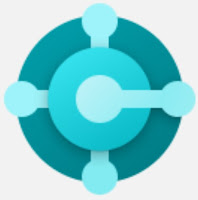 Hi Readers,
Hi Readers,In this article, we will discuss steps about setting up a Docker Container for Business Central for Microsoft Dynamics Business Central 2019 Wave 2 #MSDyn365BC.
This article is based on a question that I received in an email.
If you don't know about Docker Containers you can find more information and installation instruction in this article.
If you have already installed docker, please follow the article below to setup Docker Container for Business Central 2019 Wave 2.
1. Open Powershell ISE and Run as administrator.
2. Set Execution Policy to Remote Signed.
Set-ExecutionPolicy RemoteSigned -Force
3. Install Nav Container Helper.
Install-Module -Name navcontainerhelper -Force
4. Next is the command to create a Container for Business Central 2019 Wave 2.
** You can download Powershell cmdlet from Github.
Parameters That you can change (Bottom To Top) -
1. memoryLimit - Amount of Memory that you want to assign to Container. In the above screenshot, it is set to 3 GB if you want to increase it just replace 3 with that number for 10 GB it will 10G.
2. $licenseFile - Specify the Path on your local machine where a license for Business central is placed.
3. admin - Is the user name for the container.
4. P@ssword1 - is the Password for the container.
5. $containerName - is the name of your container.
6. $imageName - is the Business Central image that you want to use to build this container.
If you want to create container-based on On-Prem Version for Business Central 2019 Wave 2 then use tag -
mcr.microsoft.com/businesscentral/onprem:15.0.36560.0-w1
mcr.microsoft.com/businesscentral/onprem:15.0.36560.0-w1-ltsc2016
mcr.microsoft.com/businesscentral/onprem:15.0.36560.0-w1-ltsc2019
If you want to create container-based on Cloud Sandbox Version for Business Central 2019 Wave 2 then use tag -
mcr.microsoft.com/businesscentral/sandbox:15.0.36560.36626-w1
mcr.microsoft.com/businesscentral/sandbox:15.0.36560.36626-w1-ltsc2016
mcr.microsoft.com/businesscentral/sandbox:15.0.36560.36626-w1-ltsc2019
All these are for W1 (worldwide Version) and here is how we read it -
1. mcr.microsoft.com/businesscentral - Root for all business central Images.
2. on-prem or Sandbox - Specify which image we want onPrem or Sandbox.
3. 15.0.36560.36626 - Version of the product.
4. W1 - Localization that we want for the container.
5. ltsc2016 or ltsc2019 - Container operating system we want to use Windows Server 2016 or 2019.
So If I want to setup Container for North America Version of Business Central wave 2 I can use any of following image names -
mcr.microsoft.com/businesscentral/onprem:15.0.36560.36626-na
mcr.microsoft.com/businesscentral/onprem:15.0.36560.36626-na-ltsc2016
mcr.microsoft.com/businesscentral/onprem:15.0.36560.36626-na-ltsc2019
How to Find Version?
In this case, I am using Product Version 15.0.36560.36626 but how we find it?
For Business Central On-Prem tag you can check Version here.
For Business Central Sandbox tag you can check Version here.
5. So what happens when we run this command?
Depending on Internet Speed and usages of Docker Previously it may take 10 minutes to an hour to complete the process of setting up a container for you.
After completion of the process, you will see results like below.
What is there in the Results?
Results will provide the following details -
1. Container IP Address.
2. Container Hostname.
3. Web Client URL.
4. Files.
Shortcuts will be created on the desktop.
You can use these details to access web clients and also connect to the VS Code for developing an extension.
Save these details for the future.
Hope you find the information useful.
Let me know your views as a comment on this article.
Stay tuned for more.
Regards,
Saurav Dhyani
www.sauravdhyani.com





Great job.
ReplyDeletethanks a lot saurav can we use the lic file of Spring with Wave -2 release.
ReplyDeleteNot Exactly.
Delete